| Revista Umělec 2010/1 >> Tomáš Džadoň: Will to Tradition and Images of Nostalgia | Lista de todas las ediciones | ||||||||||||
|
|||||||||||||
Tomáš Džadoň: Will to Tradition and Images of NostalgiaRevista Umělec 2010/101.01.2010 Palo Fabuš | Entrevista | en cs de |
|||||||||||||
|
Today, more than ever, we find ourselves surrounded by images from the past. Yet we have a paradoxical tendency to describe our relationship to the past with words like disinterest, shallowness and loss. These words suggest a tendency to head through our daily lives with no significant concern for either the past or the future. Our contemporary society often feels disjointed, lacking in a definite ideological direction, yet here we are surrounded by a rich heritage of reminders, artifacts, and ideas inherited from our predecessors. If we paid more attention, we might realize that we live through the past a lot more than we would like to admit to ourselves. The past presents us with questions and contradictions which we must first face if we are to take the future even a little bit seriously.
Tomas Džadoň candidly views the past as a permanent presence, and his work constantly presents this to the viewer. A Slovakian artist living in Prague and influenced greatly by graphic arts, Džadoň articulates his ideas most eloquently in sculptural space, through installation. In that form, he has worked with objects such as bacon, a church censer, traditional-style wooden houses known in Slovak as drevenice, and panelák—the concrete, prefab apartment buildings of the Socialist era. These visual devices have constituted his artistic vocabulary for some time now. His easily discernible local-folkloric aesthetics can be interpreted in two ways: as cheap kitsch, or, on the other hand, as a bold confrontation with nostalgia—which Christopher Lasch poignantly described as an abdication of memory. A finalist in 2009 both the Czech Republic’s Jindřich Chalupecký Prize and the Slovak Jan Čepan Award, Džadoň asks his audience to relate through personal memory with a past inherited through the culture of their ancestors. Whether or not the spectators succumb to nostalgia, they do not depart untouched. The Past Buried Alive Nostalgia nowadays is everywhere. It is one of the driving forces behind tourism, and its emotional appeal has been exploited by advertising gurus. It not only affects older generations; indeed nostalgia and “retro” are well known to teenagers experiencing rapid cultural shifts. Nostalgia takes its toll mostly where cultural or national identity form. Evident everywhere from cinema to literature, it idealizes not only the political transformations of the past twenty years in Eastern Europe, but also Western imperialist history. Those political transformations are characterized by an ignorance of the political and social persecution suffered by the countries that underwent them. An idealized imperial history implies a perverse view of superpower, which concerns the decline of the original, local culture irrevocably and insensitively affected by colonization.1 Although nostalgia (from the Latin nostos - to return home, and algos - pain, suffering) may seem to be a natural process, it is in fact a recent phenomenon, connected to globalization, geographical mobility and the increasing pace of change. As Renato Rosaldo writes in his “Imperialist Nostalgia,” the term was first used in the Swiss Army during military expeditions far from home as a way to describe a pathological form of homesickness—more a physical than a mental difficulty. To go too far from home implied the risk of death.2 The concept only began to enter the broader cultural imagination in the period of the Industrial Revolution. Until then, nostalgia signified the spatial distinction between city (alienation) and the country (authenticity). It only emerged as a time-related concept later—now linked specifically to the past. The sociologist Bryan Turner even claims that in the decades around the turn of the 19th to the 20th century, sociology itself was inseparably bound to the discourse structured by nostalgia.3 Later, sociological thought came to recognize the main symptoms of nostalgia as feelings of historical decline, absence or loss of personal unity and moral boundaries, loss of personal freedom and autonomy, and the loss of simplicity, authenticity and emotional spontaneity.4 Nostalgia is an important aspect of Christopher Lasch’s analysis of progress in his book, The True and Only Heaven.5 According to Lasch, hope in progress goes hand in hand with nostalgia, even if they may seem contradictory. The optimistic idea of “constant world improvement” makes mysterious and rationally unattainable social forces the harbingers of change, weakens personal responsibility and excludes personal involvement in bringing progress about. We have constructed a conceptual barrier between the “simple” past and a “complex” present, and nostalgia is an expression of this illusionary divide. It effectively rules out the potential for intelligent reflection upon the past. We think of nostalgia in the image of the country idyll, replete with all its “simple” pleasures. The charming idyll is not, of course, a truthful depiction of country life. But it exists in the (nostalgic) memory of childhood safety and simplicity. “Nostalgia evokes the past only to bury it alive,” writes Lasch. “Like hope and progress, nostalgia enthusiastically declares the past dead, and denies its influence on the future.” Rabbit Hutches Superficial interpretations of Džadoň’s work suggest that it contains a longing for bygone times—but the artist has much more to offer, making the above theoretical excursion necessary. His work incorporates the theme of “Ostalgia,” a well-established idea in Eastern Europe that distorts the experience of totalitarianism and represents the limits of objective historical analysis, much in the way that nostalgia signifies the divide between country and city, tradition and modernism. For Džadoň, as for many other Czechs and Slovaks, the panelák has become a major symbol of the communist regime: this particular breed of prefab concrete high-rise constructed in huge numbers across the country between 1950 and 1990, with its characteristic soulless architecture is, understandably, a common target of humor and contempt. Paneláks, famously named “rabbit hutches” by former Czechoslovak president Vaclav Havel, are still inhabited by a third of the population in the Czech Republic. They are essentially the same as the German Plattenbau or the Khrushchyovka of the former Soviet Union. Some similarities can even be found in the notorious American project, the Pruitt-Igoe urban housing project, built in the fifties and designed by Minoru Yamasaki, architect of the World Trade Center. It was demolished less than twenty years later because of unsuitable living conditions. The panelák, an ever-present reminder of communism, has become part of Czech and Slovak culture. For younger and middle-aged generations who grew up or still live in the blocks, the uniformity of living spaces therein symbolizes an important formative experience. Džadoň himself grew up living in a panelák “home” in Poprad, Slovakia overlooking the Tatra Mountains. It still forms the inspiration for his work, particularly a series revolving around the panelák itself, carefully juxtaposed to traditional folk architecture. In it, Džadoň extracts the panelák from the realm of daily routine and nostalgia. In the installation Sídlisko Ždiar (Ždiar Neighbourhood, 2008), an estate of scale model panelák are painted to imitate the façades of drevenice, or traditional wooden houses. In the unrealized Monument lidové architektury (Folk Architecture Monument, 2006), Džadoň proposed to build three drevenice atop a panelák. YTONG (2007) replicates the façade of one drevenice using contemporary building materials. In these works, traditional architecture becomes a key to the past. It does not function as an exact historical record but rather, like the poetic image of the country idyll, as a metaphor for loss.6 The countryside, as Ursula Kelly writes in “Learning to Lose: Rurality, Transcience and Belonging” (A Companion to Michael Corbett, published in Journal of Research in Rural Education, 2009), will probably always be connected to loss. Interestingly, Džadoň uses this symbol, the drevenice, next to an object as problematic and infused with significance as the panelák. It is left to the spectator to decide whether to leave this work merely aware of its ambiguity, or to engage with the idea of loss. There is some reference to loss in the title of his formidable, four-meter piece entitled Je to atrakce nebo to padá? (Is it a tourist attraction or is it tumbling down?, 2009). This work brings to light another interpretation of the panelák’s status in cultural iconography. Here Džadoň’s problem, expressed in the form of a precariously leaning high rise, evokes nostalgia. In Can’t Undo (2008), an installation of a scale model panelák half-submerged in a moat, and Panelák? (Block?, 2009) a sculpture of a building stripped of its four façades, Džadoň does not merely present us with different interpretations of a single theme, but boldly extracts ideas from a complex communal memory, which we may or may not wish to acknowledge. In this way, Džadoň attempts to discuss the threat of a past hidden under the romantic undertones so poignantly analyzed by Christopher Lasch. The message in his work takes on urgency as the juxtaposition between socialist architecture and the traditional drevenice stimulates emotional ambiguity in the viewer. When Džadoň portrays tradition as a creation—as opposed to a natural development—in his master’s thesis Superflat (2007), he does not intend to mock or to alienate the most authentic aspects of local culture. Rather, he comments on the unavoidable artificiality of our relationship to the past. When we pass from the front to the back of the façade of a drevenice, and find that we are still, always “outside” it, we must ask whether the much-hated panelák is really less valuable than traditional folk architecture. Džadoň, without a hint of irony, points out that sooner or later we will have to accept that “traditional” status is looming over the panelák, too. The panelák is the new drevenice. According to Lasch, the experience of alienation is a natural element of the human condition. Tradition, like nature, is considered a potent symbol of authenticity, simplicity and purity, even though it is only a social construct. Everyone holds inside them an idealized picture of a home saturated with human warmth and safety. When forging a bond with the controversial past, nostalgia becomes understandable—but it is not a sustainable defense mechanism. Transitions to authenticity At the heart of Džadoň‘s oeuvre lies a strong focus on the present, as demonstrated by a series of works dealing with the theme of transition, or the shift between past and future. The works Brána (Gateway, 2008) and Portál (Portal, 2009) are replicas of thresholds typical to the panelák, framed by characteristic red bricks. In Brána, a doorframe is multiplied outward, repeating its form, creating in the banal figure of the doorway an association with the sacred. This multiplied form is also used in Územie nikoho (No Man’s Land, 2009), in which a basic doorframe is multiplied, extending and reframing the point of entry. As the artist explains, in an interview by Terezie Nekvindová (in the Slovak architecture journal Stavba, 2009), “The entrance door is an emphasis of the particular zone of transition. In folk architecture the entry door is highly symbolic: a tall threshold that had to be stepped over, the head had to be lowered, bent or humbled when crossing the entrance. It is very important as a division and transition zone.” The dynamic combination of personal and collective memory, memories of the artist’s experience, and the influence of his surroundings are key aspects of Džadoň‘s work. His objects and installations serve as the common ground linking a testament to tradition with the urge to forget, cutting short any longing for an idealized past by incorporating the actual circumstances of the present. A longing for safety and security, the need to return to the mother’s womb—in psychoanalytical terms—is the most powerful symbolic metaphor for home. In his most recent work, Džadoň places the panelák right in the epicenter of this allegory. The appropriation of Euclidean geometry—clean, precise, absolute forms with strong outlines—in the formation of his present work—makes his attempt to find and recuperate authenticity even more exciting. These works are more real than reality itself. Even they cannot escape the simulation to which they are a response. This in itself is a valid commentary in a world where nothing is more artificial than the denial of artifice as a permanent condition of human nature. 1 Rosaldo, Renato. “Imperialist Nostalgia” Pp. 107-122 in Representations, 26. Spring 1989. 2 Ibid. 3 Cit. podle Frow, John. 1991. “Tourism and the Semiotics of Nostalgia” Pp. 123-151 in October, 57. 4 Ibid. 5 Lasch, Christopher. True and Only Heaven: Progress and Its Critics. London - New York : W. W. Norton & Company 1991. 6 Kelly, Ursula A. 2009. “Learning to Lose: Rurality, Transcience, and Belonging (A Companion to Michael Corbett)” In Journal of Research in Rural Education, 24 (11).
01.01.2010
Artículos recomendados
|
|||||||||||||
|
04.02.2020 10:17
Letošní 50. ročník Art Basel přilákal celkem 93 000 návštěvníků a sběratelů z 80 zemí světa. 290 prémiových galerií představilo umělecká díla od počátku 20. století až po současnost. Hlavní sektor přehlídky, tradičně v prvním patře výstavního prostoru, představil 232 předních galerií z celého světa nabízející umění nejvyšší kvality. Veletrh ukázal vzestupný trend prodeje prostřednictvím galerií jak soukromým sbírkám, tak i institucím. Kromě hlavního veletrhu stály za návštěvu i ty přidružené: Volta, Liste a Photo Basel, k tomu doprovodné programy a výstavy v místních institucích, které kvalitou daleko přesahují hranice města tj. Kunsthalle Basel, Kunstmuseum, Tinguely muzeum nebo Fondation Beyeler.
|







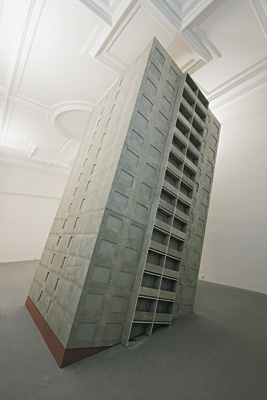
























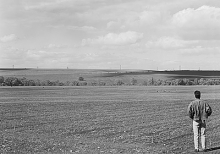
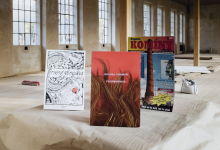
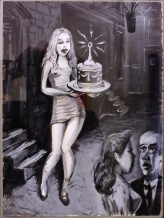
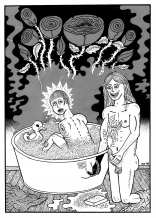


 We Are Rising National Gallery For You! Go to Kyjov by Krásná Lípa no.37.
We Are Rising National Gallery For You! Go to Kyjov by Krásná Lípa no.37.
Comentarios
Actualmente no hay comentariosAgregar nuevo comentario